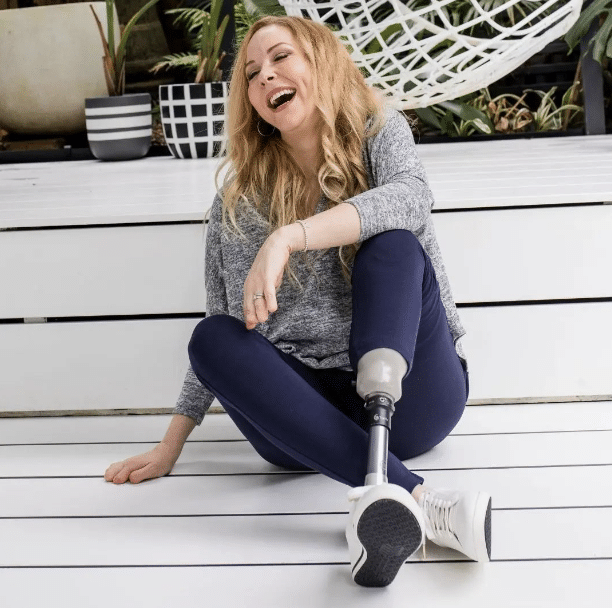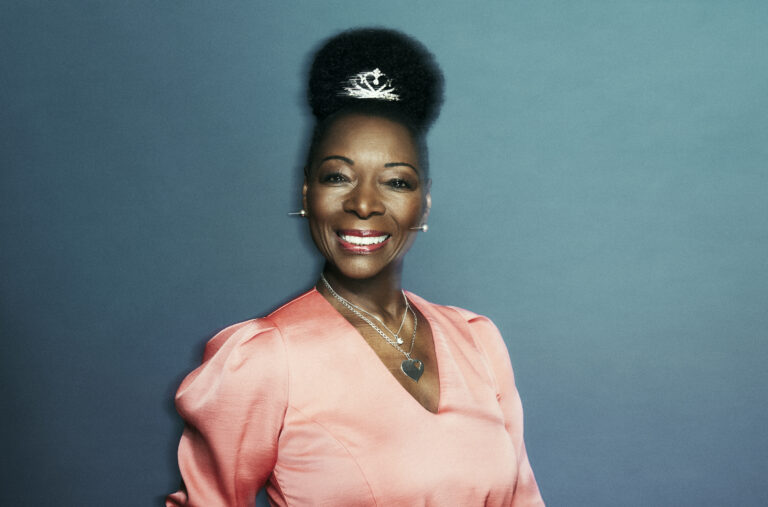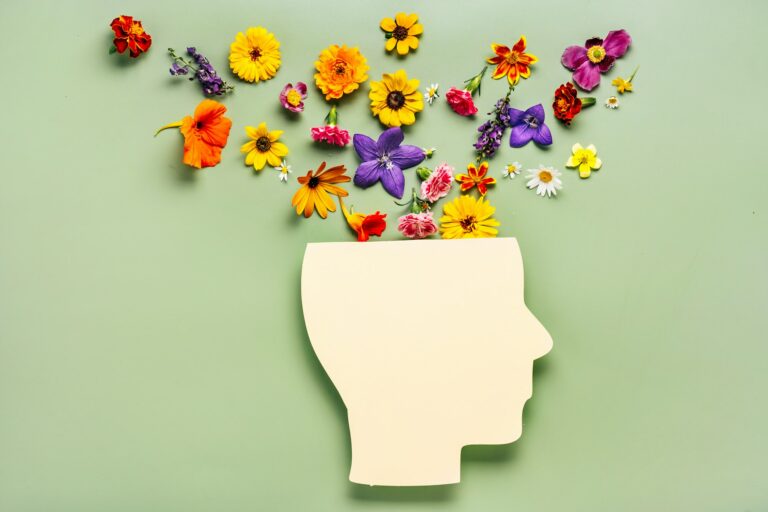
Pictured: Lisa Cox
Lisa Cox is a freelance writer and consultant, and is committed to changing the way disability is viewed in the media, advertising and society.
She had a successful career in advertising agencies and has two degrees. But almost 20 years ago Lisa acquired several disabilities – both visible and invisible, and spent more than a year in hospital where she died twice in medical terms.
She says: “I knew I couldn’t change my permanent disabilities.
But what I can change is public perception of disability.”
Q You set up your own company because you were frustrated at the lack of opportunities for you in the workplace after you became disabled. Can you tell us more about what happened when you tried to get back to work?
A “I loved my job in advertising and marketing and intended to go back to it when I left hospital. When I was in hospital my sister brought me work briefs, that’s how much I loved what I did and couldn’t wait to get back. Writing was in my blood.
“I did return to advertising agencies for a while but then decided it was no longer for me. I still loved the work though and wanted to stay involved with the industry.
“I thought that surely if I went to work for a disability organisation, they will understand that people with disabilities are more than their disability. But even those organisations – not to name names – but I was told, ‘There’s a corner, sit there, put paper in envelopes and answer the phone’.
“It was so demoralising and extremely upsetting. At another workplace (also a disability organisation) I was placed in front of a computer and given some very light data entry to do. I was bored out of my brain, did the work in less than an hour and spent the day reading advertising publications online.
“So I started my own business.
“I now work with brands and advertising agencies as a consultant.
“I understand how those industries work from the inside. So instead of sitting on Twitter and simply saying ‘do better’, I work with those industries and show them how.
“My job is to work with brand managers and account directors, helping them navigate the nuance of people with disabilities. For example: how to pan a camera – often cameramen will focus on a person’s physical disability rather than treating that person the same as all the other people being filmed.
“There are over-arching strategies as well as small details to think about when portraying people with disability in the media and in advertising. I work in collaboration with other consultants, industry bodies and peak organisations who can speak about things I don’t have experience with – such as intellectual disabilities, autism or Indigenous affairs.
Q You are a consultant and copywriter for advertising and media. What work do you do to promote inclusion in advertising and media?
A “I like to get involved early on. Here’s an example of a project that went really well: when the consultant was brought on in the early phases of an advertising project and when the script was presented, I went back to the drawing board with script writers for how best to include people with disabilities; the nuance of disabilities, the language, inclusion and representation. It’s important not to shame people but to encourage and educate.
“Here’s an example of a project that went badly: the advertisement had already been scripted and shot and then the consultant was brought on and asked to check if it was OK. $500k later… And the consultant, who may or may not have been me, had to say it wouldn’t work. It was an easy fix and could have been avoided earlier on in the process.
“There is increasing awareness of disability portrayal in the media and in advertising – non-disabled people can spot inauthenticity and stereotyping. Brands need to be aware what a stereotype is and why they shouldn’t include them.”
Q What about the business case for improving representation of people with disabilities in advertising?
A “The spending power of the disabled community is US$1.9 trillion. And that’s without friends, family and loved ones – my husband is great ally. He won’t support brands that don’t support me. And my family is the same.
“We are 20 per cent of the population. We’re not just talking about a few lazy dollars. It’s a huge population, the size of China, that advertisers are missing out on.
“The fact that so many only see disability as a charity model has to stop or we cannot progress. I’ve spent enough time in boardrooms to know that many of the decision-makers often care most about the bottom of a profit and loss statement. That’s not a bad hing, it’s just the way the world works. We need to communicate with those people and make it very clear to them that disability is economically and financially very good for business.
Q What responsibility does the media and advertising industry have to improve disability representation?
A “My niece and nephew don’t have a problem looking me in the eye and communicating with me.
“But educated adults have trouble interacting with me because I’m disabled. They don’t know where to look, what to say or how to deal with me.”
“The difference is visibility.
“My niece and nephew see me every week. Imagine if we could put Auntie Lisa in everybody’s living room around the globe. That’s the power of advertising and marketing and culture: it can normalise a person with disability by putting them in a living room. My niece and nephew won’t grow up being awkward with a disabled person. And if other children grow up seeing people who look different, neither will they.
“It’s my hope that by having through the power of advertising and media, children of today who have disability don’t have that same feeling as I do every time I go out in public of not being made to feel welcome.
Q What about biases against disabled people?
A “One common misconception is that all disabilities are intellectual ones. That because I’m in a wheelchair, I am not capable of doing certain jobs.
“But I can empathise when people don’t know what to say or what words to use. For 24 years of my life I wasn’t disabled. As a copywriter wanting to do the right thing, I wanted to learn, to educate myself and do better. But I needed some help – that’s my job these days.
Q What is your best advice for employers for encouraging disabled workers into their organisation – and retaining them?
A “Encouraging people with disabilities into the workplace begins at the very early stages in the advert. It can be as simple as including a line about how the organisation encourages diversity and making it known publicly you are a diverse employer. When I was looking for a job, I could see that a website wasn’t always accessible – without bold text or other markers, that says to me this place isn’t inclusive. It doesn’t get disability and it isn’t an ally.
“Before the interview process, ask is there any accommodation you need to make. For me its wheelchair access. For someone else it might be hearing. Never make assumptions – such as assuming an adjustment will be the same as the last person’s who was in a wheelchair.
“To retain employees, check in with that person. It isn’t about making them feel awkward, but letting them know your office door is always open if they do need to talk and that they are able to speak to you confidentially.
“There is a misconception that people with disabilities need hundreds of thousands of accommodations. For me, I need a lock on the bathroom door and every second Wednesday off for a medical appointment. Speak to that individual and find out what they need.
“Covid was horrible especially for disabled people but it did fast-track flexible working after disabled people had been asking for it for years.
“And there are so many accommodations that suit everybody – lots of people can win from flexible working hours.”
Q Disability inclusion is often the slowest area of DEI to see change. Why do you think this is and what can we do about it?
A “A Harvard Business Review published a study that showed 90 per cent of businesses supported DEI but only 4 per cent included disability in their strategies.
“I signed up for Google alerts about online diversity and inclusion stories. But I don’t read it now because the vast majority of stories are about other areas of DEI. That’s great but we need more disability stories. What we can do is share what little disability content there is. In Australia we are about 10 years behind the UK and the USA. Organisations like the Valuable 500 are doing some fantastic work and I urge followers to look up what they are doing.
“Disability exclusion is a systematic issue. It begins at school. It overwhelms me how much more needs to be done. We need more role models so young people can see themselves better represented – not just Paralympians.
“I hope I am unemployed in a few years’ time. I love doing my job and I am grateful for the opportunity to make a difference. But it shouldn’t be necessary. I hope I am out of a job eventually – and I hope Diversity Network is too!”
www.Lisacox.co is Lisa’s personal and professional page.





